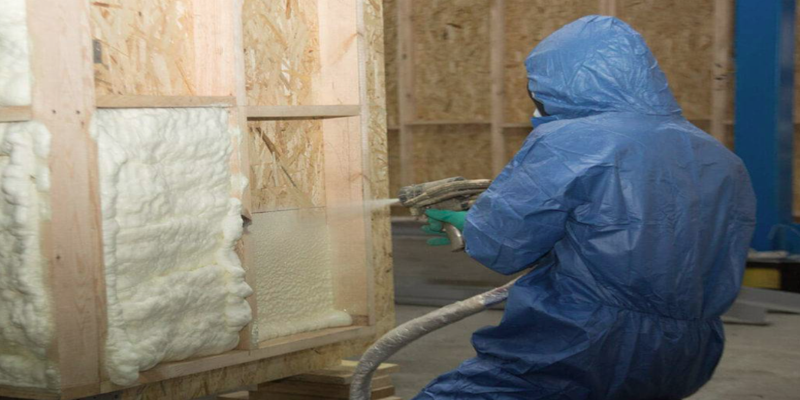Spray polyurethane foam (SPF) is a high-performance insulation and sealing material widely used in construction and manufacturing. It is created by mixing isocyanate and polyol resin—components that react to form an expanding foam. This versatile material improves energy efficiency, provides structural support, and enhances moisture and air control in buildings. However, the performance of spray foam is not solely determined by its formulation—it is also significantly influenced by polyurethane catalysts, such as MXC-BDMA, which play a critical role in foam quality, structure, and adhesion.
Types of Spray Foam: High-Density vs. Low-Density
Spray foam comes in two main types: high-density and low-density, each suited for different application environments.
1. High-Density Spray Foam
High-density (HD) spray foam typically has a core density of 2.5 to 3 lbs/ft³. It is rigid, durable, and water-resistant, making it ideal for:
- Roofing systems
- Exterior walls
- Industrial tanks and pipes
- Commercial insulation projects
Its strong structural integrity adds support to surfaces like roofs and walls, helping extend the lifespan of buildings. Because of its minimal permeability and strong adhesion, HD spray foam is commonly used in outdoor and exposed environments.
2. Low-Density Spray Foam
Low-density (LD) spray foam has a core density of approximately 0.5 lbs/ft³ and is often referred to as open-cell spray foam. This type is softer and more flexible, allowing it to:
- Fill hard-to-reach gaps and cavities
- Provide excellent soundproofing
- Serve as air and vapor barriers in indoor applications
It is commonly applied in:
- Wall cavities
- Non-ventilated attics
- Ceiling and floor spaces
Because it allows controlled vapor permeability, LD spray foam helps manage indoor moisture without trapping it inside wall systems.
The Importance of Catalysts in Spray Foam Formulations
Polyurethane foam systems rely on precise chemical reactions to achieve the desired expansion, strength, and curing profiles. Catalysts are essential in regulating the reaction between polyol and isocyanate, ensuring a consistent rise and optimal cell structure.
Among them, amine catalysts are widely used for their ability to control both gelling (polyol-isocyanate) and blowing (water-isocyanate) reactions. The correct balance between these reactions is vital to produce spray foam with good dimensional stability, uniform cell structure, and adhesion.
Introducing MXC-BDMA: A Catalyst for High-Performance Spray Foam
At Mingxu New Materials, we offer MXC-BDMA, a high-efficiency benzyl dimethylamine catalyst designed specifically for applications requiring enhanced foam quality and adhesion.
Key Features of MXC-BDMA:
- Promotes early-stage fluidity of the polyurethane system
- Ensures uniform cell formation for consistent thermal insulation
- Enhances adhesion between foam and substrate, improving structural integrity
- Suitable for a wide range of applications including:
- Polyester polyurethane bulk soft foam
- Rigid polyurethane foam
- Polyurethane sheets
- Adhesive coatings
MXC-BDMA is particularly well-suited for rigid spray foam systems, such as those used in roof insulation and exterior applications, where strong adhesion and closed-cell structure are critical.
Why Choose MXC-BDMA for Spray Foam Applications?
Manufacturers seeking to improve foam performance—whether in structural roofing or cavity wall insulation—will benefit from the optimized reaction control that MXC-BDMA provides. Its balance of catalytic strength and control helps avoid common foam issues such as:
- Uneven rise profiles
- Poor cell structure
- Inadequate adhesion
- Brittleness or shrinkage
Whether you’re producing high-density exterior SPF or low-density interior foam, MXC-BDMA can help you achieve better results with more reliable processing.
Contact Us for More Information
At Mingxu New Materials, we specialize in amine and metal catalysts for a wide range of polyurethane foam systems. Our products are trusted by manufacturers around the world for their efficiency, consistency, and low emissions.
Let us help you find the right catalyst solution for your application.
Post time: Jun-18-2025

